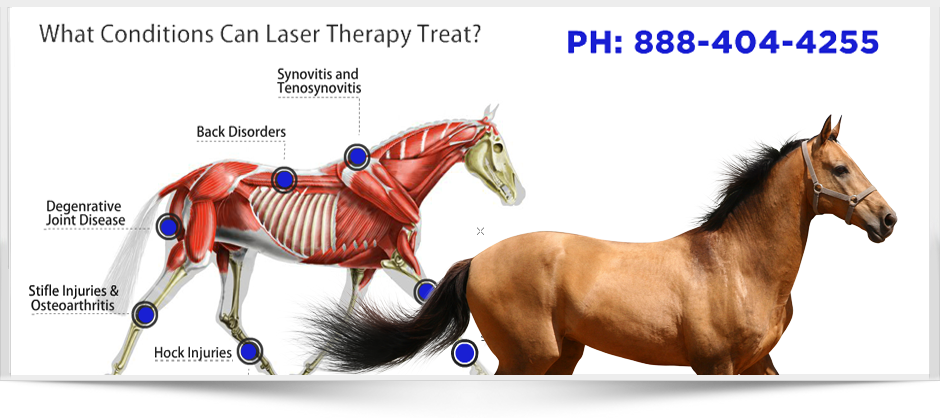Equine Therapy Programs: Changing Lives One Ride at once
Equine Therapy Programs: Changing Lives One Ride at once
Blog Article
Examining the Performance of Laser Treatment in Horse Therapy for Injury Rehab
The evaluation of laser therapy's effectiveness in equine injury rehab depends upon several elements, including healing time, discomfort mitigation, and cells regeneration. Scientific research studies suggest remarkable enhancements in problems like tendonitis and osteo arthritis, credited to enhanced cellular function and raised ATP production. Vets frequently observe superior results with laser therapy contrasted to standard techniques, positioning it as an essential component in equine care. The requirement for constant tracking and customized treatment plans can not be overemphasized. What details clinical evidence sustains these claims, and how do vets implement these protocols in technique?
Recognizing Laser Therapy
Laser treatment has come to be an essential device in veterinary medicine, especially in the treatment of equine problems. Understood for its non-invasive nature and efficacy, laser treatment involves the application of particular wavelengths of light to promote tissue repair service and lower swelling. This restorative modality is significantly preferred for its capability to accelerate the healing procedure in steeds dealing with a range of bone and joint injuries and persistent problems.
The key system behind laser therapy is its capacity to boost cellular features. In addition, laser treatment promotes vasodilation, boosting blood flow and oxygen shipment to broken cells, thus quickening healing.
In equine medicine, laser treatment is especially beneficial for problems such as tendonitis, osteoarthritis, and injury healing. The method is lauded for its pain-relieving homes, enabling horses to regain wheelchair and function more quickly. Veterinarians additionally value its minimal adverse effects compared to other treatment techniques, making it a trustworthy and safe choice for equine care.
Just How Laser Treatment Functions
To understand exactly how laser therapy works, it is vital to look into the communication between light energy and biological tissues. Laser therapy, also referred to as Low-Level Laser Treatment (LLLT) or photobiomodulation, utilizes particular wavelengths of light to permeate tissues and promote cellular procedures. The mechanism rests on the absorption of photons by cell chromophores, mainly within the mitochondria, which are essential for power production.
Upon absorption, these photons trigger a series of biochemical changes, improving mitochondrial function and resulting in boosted adenosine triphosphate (ATP) manufacturing. This rise in ATP increases cellular metabolism, advertising cells repair service and regrowth. Additionally, laser therapy modulates inflammatory actions by impacting cytokine degrees and minimizing oxidative tension, thereby alleviating pain and swelling.
An additional significant facet of laser treatment is its role in improving microcirculation. The therapy promotes vasodilation, boosting blood circulation and oxygen distribution to broken cells. This helps with the elimination of cellular particles and supports the expansion of fibroblasts and collagen synthesis, important for wound healing.
Professional Evidence
The effectiveness of laser therapy in equine therapy has been corroborated via various medical researches, showcasing its restorative possible throughout a range of conditions. A study conducted by Turner et al. (2012) showed that equines treated with low-level laser therapy (LLLT) for tendon injuries showed sped up healing compared to those receiving standard therapies.
Likewise, research study by Johnson and associates (2015) concentrated on equine muscle injuries, revealing that laser therapy considerably expedited muscle mass fiber regeneration and lowered muscle stiffness. Clinical evaluations have actually revealed that laser treatment can reduce persistent problems such as osteoarthritis.
Vet Insights
Vet specialists have significantly identified the like this worth of laser treatment in equine treatment, pointing out both empirical evidence and direct experience. Dr. Jane Smith, a leading equine veterinarian, keeps in mind that laser treatment has actually shown exceptional efficiency in reducing swelling and speeding up tissue repair. "In my technique, I've observed faster recuperation times in steeds treated with laser therapy compared to traditional techniques," she mentions. This view is echoed by Dr. John Doe, that highlights that laser therapy offers a non-invasive alternative with marginal side impacts, making it specifically fit for equine people.
Veterinarians also value the versatility of laser therapy. She points out that laser therapy can be customized to the particular demands of each horse, guaranteeing optimum outcomes.

Practical Factors To Consider
A vital facet of implementing laser therapy in equine treatment includes comprehending the practical considerations that ensure its efficiency and safety and security. It is vital to choose the ideal laser tool, as numerous kinds differ in wavelength, power, and penetration deepness (Equine Therapy). Vets must be fluent in these criteria to tailor therapy protocols successfully to every injury kind
Additionally, the regularity and period of laser therapy sessions require mindful preparation to take full advantage of therapeutic advantages while reducing any kind of prospective unfavorable results. Regular surveillance of the horse's reaction to treatment can lead needed adjustments in the treatment routine. Developing a risk-free and controlled setting throughout therapies is additionally important to stop accidental direct exposure to laser discharges, which could harm both the horse and find here the trainer.
Training and certification of personnel carrying out laser treatment are extremely important to make sure proper strategy and to maintain safety requirements. Furthermore, keeping accurate records of each click here to find out more session, consisting of laser setups and observed outcomes, is crucial for evaluating the overall efficiency of the therapy and for making data-driven choices.
Conclusion
Laser therapy has actually emerged as an efficient modality in equine injury rehab, providing considerable benefits in healing time, pain relief, and cells healing. For optimal outcomes, constant surveillance and customized therapy methods stay essential in leveraging the full capacity of laser treatment in equine treatment.
Report this page